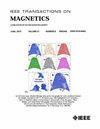Temperature-Adaptive TRNG-Encrypted MRAM PUF: Enhancing Resistance to Machine Learning Attacks
IF 2.1
3区 工程技术
Q3 ENGINEERING, ELECTRICAL & ELECTRONIC
引用次数: 0
Abstract
With the widespread application of the Internet-of-Things (IoT) devices, the physical unclonable function (PUF) has emerged as an essential lightweight hardware security mechanism. However, various powerful machine learning attack techniques have been developed to fake PUFs, presenting a multitude of potential risks. This article proposes a novel PUF design by using the spin-transfer torque magnetic random-access memory (STT-MRAM) and an obfuscation mechanism. The primary performance metrics in terms of uniformity (50.04%), uniqueness (49.745%), and reliability (99.59%) of the proposed PUF have been verified, which validate its functionality. Previous true random number generator (TRNG) designs based on MRAM often fail in extreme temperature conditions due to the degradation of randomness. Therefore, a temperature-adaptive TRNG (TA-TRNG) that can produce true random numbers in a broad temperature range (−25 °C to 125 ° C) is introduced in this work. These random numbers are used as “noise” to obfuscate the responses of the magnetic PUF (MPUF), which makes it difficult to crack the masked challenge-response pairs (CRPs) for attackers. Five different machine learning algorithms have been used to evaluate the resilience of the proposed TA-TRNG-PUF circuit against modeling attacks. The statistical results show that the obfuscated MPUF is on average 18.38% more immune against modeling attacks compared with the one without obfuscation, with predictions approaching random guesses (close to 50%).温度自适应trng加密MRAM PUF:增强对机器学习攻击的抵抗力
随着物联网(IoT)设备的广泛应用,物理不可克隆功能(PUF)已成为一种必不可少的轻量级硬件安全机制。然而,已经开发出各种强大的机器学习攻击技术来伪造puf,这带来了许多潜在的风险。本文提出了一种利用自旋传递转矩磁随机存取存储器(STT-MRAM)和模糊机制设计PUF的新方法。所提出的PUF在一致性(50.04%)、唯一性(49.745%)和可靠性(99.59%)方面的主要性能指标得到了验证,验证了其功能。以往基于MRAM的真随机数发生器(TRNG)设计在极端温度条件下往往由于随机性退化而失效。因此,在本研究中引入了一种温度自适应TRNG (TA-TRNG),它可以在宽温度范围(- 25°C至125°C)内产生真随机数。这些随机数被用作“噪声”来混淆磁PUF (MPUF)的响应,这使得攻击者难以破解掩码挑战响应对(CRPs)。已经使用了五种不同的机器学习算法来评估所提出的TA-TRNG-PUF电路对建模攻击的弹性。统计结果表明,与未混淆的MPUF相比,混淆后的MPUF对建模攻击的免疫力平均提高了18.38%,预测接近随机猜测(接近50%)。
本文章由计算机程序翻译,如有差异,请以英文原文为准。
求助全文
约1分钟内获得全文
求助全文
来源期刊

IEEE Transactions on Magnetics
工程技术-工程:电子与电气
CiteScore
4.00
自引率
14.30%
发文量
565
审稿时长
4.1 months
期刊介绍:
Science and technology related to the basic physics and engineering of magnetism, magnetic materials, applied magnetics, magnetic devices, and magnetic data storage. The IEEE Transactions on Magnetics publishes scholarly articles of archival value as well as tutorial expositions and critical reviews of classical subjects and topics of current interest.
 求助内容:
求助内容: 应助结果提醒方式:
应助结果提醒方式:


